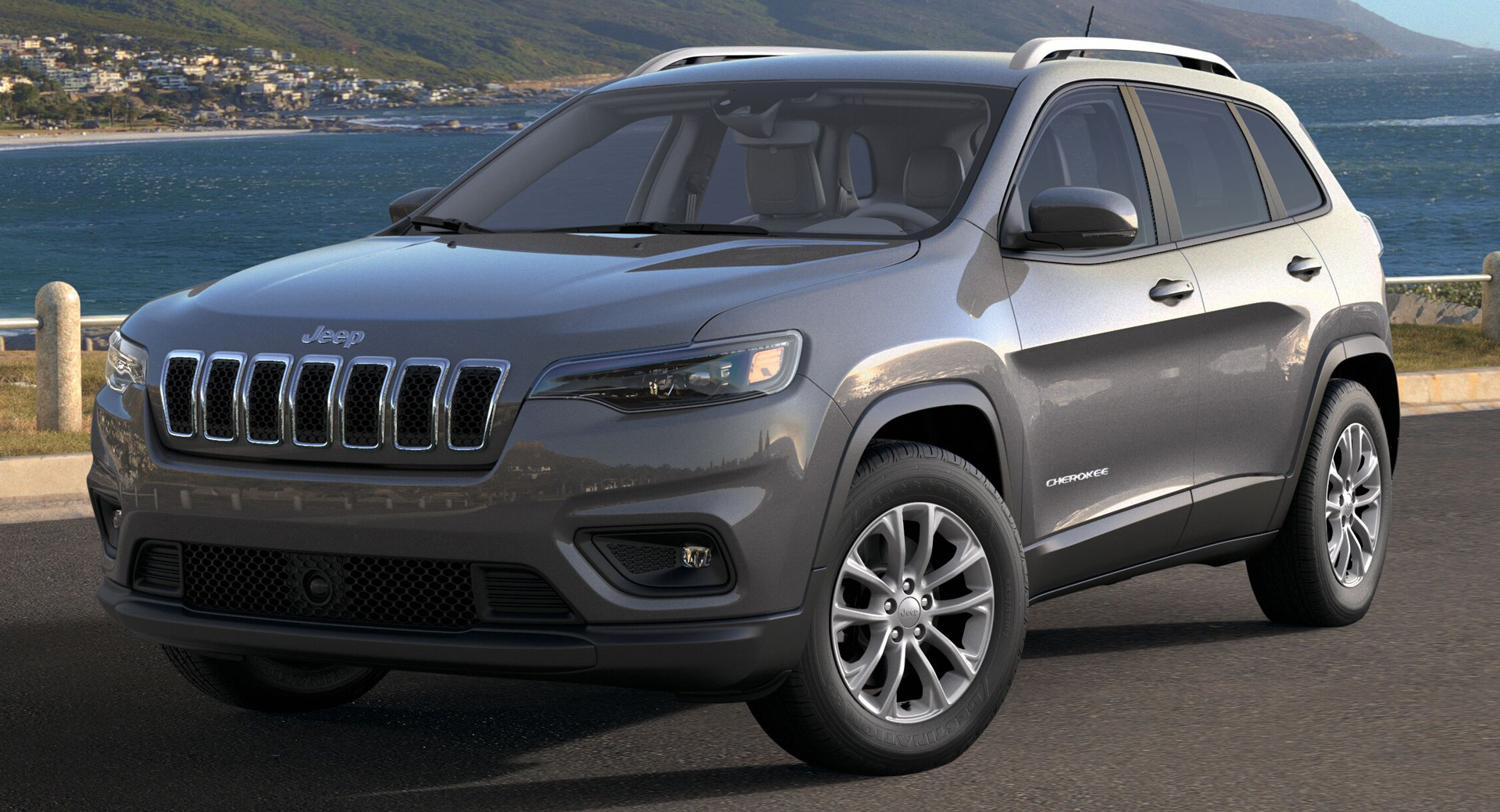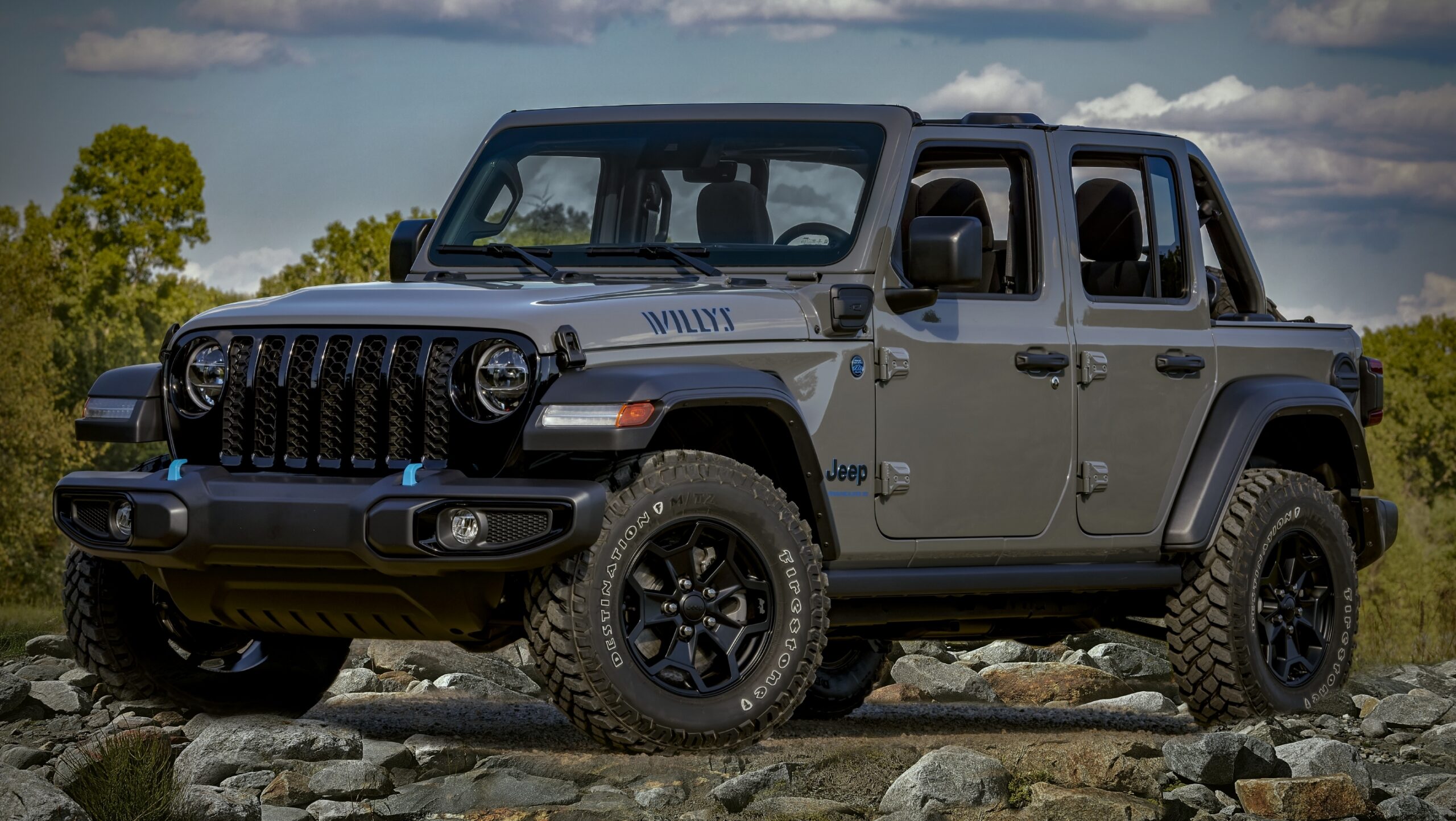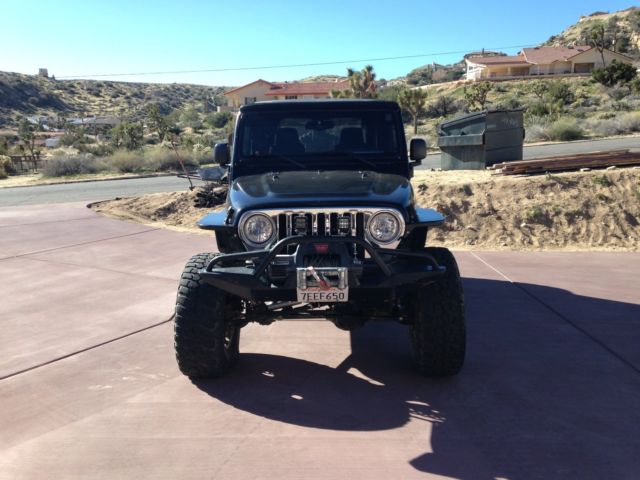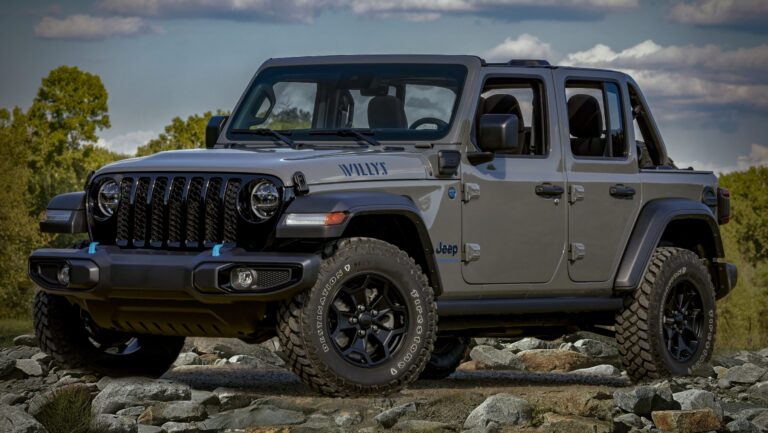Jeep Commander Rims For Sale: A Comprehensive Guide to Upgrading Your Ride
Jeep Commander Rims For Sale: A Comprehensive Guide to Upgrading Your Ride jeeps.truckstrend.com
The Jeep Commander, with its distinctive seven-slot grille and rugged yet refined presence, has always been a vehicle that balances family utility with undeniable off-road capability. For Commander owners, the wheels – or rims – are not just a functional component; they are a statement of style, a key determinant of performance, and an essential element of the vehicle’s overall aesthetic. Whether you’re looking to replace a damaged factory rim, enhance your Commander’s aggressive stance for off-road adventures, or simply give it a fresh, personalized look, understanding the world of Jeep Commander Rims For Sale is crucial.
This comprehensive guide will delve deep into everything you need to know about purchasing rims for your Jeep Commander. From deciphering technical specifications to exploring various types and finishes, and from identifying reputable sellers to understanding installation and maintenance, we aim to equip you with the knowledge to make an informed and satisfying purchase.
Jeep Commander Rims For Sale: A Comprehensive Guide to Upgrading Your Ride
Understanding Your Jeep Commander’s Rim Specifications
Before you even begin browsing for Jeep Commander Rims For Sale, it’s imperative to understand the precise specifications that ensure proper fitment and safe operation. The Jeep Commander (XK/XH platform, produced from 2006-2010) has very specific wheel requirements. Mismatched specifications can lead to rubbing, poor handling, premature wear on components, or even dangerous failures.
Here are the critical dimensions and terms you need to know:
- Bolt Pattern (PCD – Pitch Circle Diameter): This is arguably the most critical specification. The Jeep Commander uses a 5x127mm (or 5×5 inch) bolt pattern. This means there are five lug holes, and they are arranged on a circle with a diameter of 127mm (or 5 inches). Any rim you consider must match this pattern.
- Diameter: Common factory diameters for the Commander range from 17 to 20 inches. Aftermarket options can extend this range. Larger diameters often mean less sidewall on tires, potentially affecting ride comfort but offering a more aggressive look.
- Width: This refers to the measurement across the rim from bead seat to bead seat. Factory widths typically range from 7.5 to 8 inches. The rim width must be compatible with your chosen tire width for optimal tire performance and safety.
- Offset: Offset is the distance from the mounting surface of the wheel to the centerline of the rim.
- Positive Offset: The mounting surface is closer to the outside (front) of the wheel. Most factory wheels have a positive offset, tucking the wheels further into the fender wells.
- Zero Offset: The mounting surface is exactly at the centerline.
- Negative Offset: The mounting surface is closer to the inside (back) of the wheel, pushing the wheels further out from the fender. This creates a wider stance, often desired for an aggressive off-road look, but can cause rubbing issues if not properly accounted for with lift kits or fender modifications.

- Center Bore: This is the hole in the center of the wheel that fits over the vehicle’s hub. The Jeep Commander typically has a 71.5mm center bore. While wheels with a larger center bore can be used with hub-centric rings to ensure a snug fit, wheels with a smaller center bore will simply not fit.
- Backspacing: Closely related to offset, backspacing is the distance from the inner edge of the wheel to its mounting surface. It dictates how far the wheel sits inward toward the suspension components. Proper backspacing is essential to prevent rubbing on calipers, control arms, or inner fender wells, especially when larger tires are mounted.

Understanding these specifications will empower you to filter your search for Jeep Commander Rims For Sale effectively and avoid costly mistakes.

Why Upgrade Your Jeep Commander Rims? Benefits & Motivations
Investing in new rims for your Jeep Commander offers a myriad of benefits beyond just aesthetics. Owners seek out Jeep Commander Rims For Sale for various reasons, each contributing to an enhanced driving experience.
- Aesthetics and Personalization: This is often the primary driver. Factory rims, while functional, can be generic. Aftermarket rims come in an astonishing array of designs, finishes (matte black, gloss black, chrome, machined, bronze, custom colors), and styles, allowing you to truly personalize your Commander and make it stand out. A fresh set of wheels can dramatically transform the vehicle’s entire appearance, giving it a sportier, more luxurious, or more rugged look.
- Enhanced Off-Road Capability: For the adventurous Commander owner, specific rim types can significantly improve off-road performance. Stronger materials like steel or specialized designs like beadlock or simulated beadlock wheels offer increased durability and better tire seating, especially when airing down tires for improved traction on challenging terrain. A wider stance (achieved with lower offset rims) can also improve stability.
- Performance Improvements: While less dramatic than engine upgrades, lighter alloy rims can reduce unsprung weight. This can lead to marginal improvements in acceleration, braking, and handling, as the suspension has less mass to control. It can also potentially lead to a slight improvement in fuel economy, though this is often negligible for a vehicle of the Commander’s size.
- Tire Options: Upgrading your rims often goes hand-in-hand with upgrading your tires. Different rim sizes and widths allow you to mount a wider range of tire sizes and types, whether you’re looking for aggressive mud-terrain tires, comfortable all-terrains, or performance street tires.
- Damage Replacement: Unfortunately, rims can be damaged by potholes, curb rash, or off-road impacts. Finding Jeep Commander Rims For Sale is essential for replacing bent, cracked, or severely scratched factory wheels, restoring both the safety and appearance of your vehicle.
Types of Rims Available for Jeep Commander
The market for Jeep Commander Rims For Sale is diverse, offering options based on material, construction, design, and specialized features.
-
Material:
- Alloy Wheels: The most common type for modern vehicles, including the Commander. Made from an aluminum alloy, they are lighter than steel, dissipate heat better (beneficial for braking), and allow for intricate, aesthetically pleasing designs. They are generally more susceptible to bending or cracking on severe impacts compared to steel.
- Steel Wheels: Heavier and less attractive than alloy, but incredibly durable and often cheaper. Steel wheels are popular for serious off-roaders who anticipate heavy abuse, as they are more likely to bend rather than crack, and can often be hammered back into shape. They are also a common choice for winter tires due to their resistance to road salt and lower cost.
-
Construction:
- Cast Wheels: The most common and affordable manufacturing method. Molten alloy is poured into a mold. While strong enough for most applications, they are less dense and can be heavier than other types.
- Forged Wheels: Made by pressing a solid block of aluminum under extreme pressure. This creates a denser, stronger, and significantly lighter wheel. Forged wheels are premium options, reflected in their higher price.
- Flow Formed (or Rotary Forged) Wheels: A hybrid process where the wheel rim is spun and heated while rollers press it into shape. This strengthens the material and reduces weight, offering a good balance of performance and cost between cast and forged.
-
Design and Finish:
- OEM Replicas: Designed to look identical or very similar to your Commander’s original factory wheels, perfect for replacing a single damaged rim or maintaining a stock appearance.
- Aftermarket Designs: This is where personalization truly shines. You’ll find multi-spoke, mesh, dish, directional, and various other patterns. Finishes range from classic chrome and polished aluminum to popular black (matte, satin, gloss), gunmetal, bronze, and even custom painted options.
- Specialized Wheels:
- Beadlock Wheels: Feature a ring that bolts the tire bead directly to the rim, preventing the tire from coming off the wheel when aired down to very low pressures for extreme off-roading. These are typically not street-legal and are for dedicated off-road use.
- Simulated Beadlock Wheels: Offer the aggressive, rugged look of a beadlock wheel without the actual beadlock functionality. They are generally street-legal and are a popular aesthetic choice for off-road enthusiasts.
Where to Find Jeep Commander Rims For Sale
The accessibility of Jeep Commander Rims For Sale has never been greater, with numerous avenues available for both new and used options.
-
New Rims:
- Online Retailers: Websites like Tire Rack, Discount Tire Direct, 4 Wheel Parts, Summit Racing, and Amazon offer vast selections. They often have fitment guides to ensure compatibility and competitive pricing. Many also offer tire and wheel packages.
- Specialty Off-Road Shops: Local or online, these shops cater specifically to off-road vehicles and often have expert staff who can recommend the best rims for your Commander’s specific use case.
- Dealerships: For genuine OEM replacement rims, your local Jeep dealership is the go-to source, though prices can be higher.
- Local Tire Shops: Your neighborhood tire shop can order and install new rims, often providing a convenient all-in-one service.
-
Used Rims:
- Online Marketplaces: eBay, Craigslist, and Facebook Marketplace are excellent places to find used Jeep Commander Rims For Sale. You might find great deals, especially if buying locally to avoid shipping costs. Be cautious and thoroughly inspect used rims before purchasing.
- Jeep Forums and Enthusiast Groups: Dedicated Jeep Commander or Grand Cherokee (WK) forums and Facebook groups often have "for sale" sections where members sell their used parts. This can be a great way to find well-maintained rims from fellow enthusiasts.
- Junk Yards/Salvage Yards: If you’re looking for a single replacement factory rim on a budget, a salvage yard might have what you need. Inspection is key here.
Pros and Cons of New vs. Used:
- New: Guaranteed quality, warranty, latest designs, no hidden damage. Higher cost.
- Used: Lower cost, potentially harder to find exact match, no warranty, risk of hidden damage (bends, cracks, repairs). Requires careful inspection.
Important Considerations Before Buying
Making the right choice for Jeep Commander Rims For Sale involves more than just picking a design you like. Thoughtful consideration of several factors will ensure your satisfaction and safety.
- Budget: Rims can range from under $100 for a used steel wheel to over $1,500 per wheel for premium forged options. Set a realistic budget and factor in additional costs like mounting, balancing, and potentially new TPMS sensors or lug nuts.
- Intended Use: This is paramount.
- Daily Driver: Focus on aesthetics, durability for street conditions, and potentially lighter weight for fuel efficiency.
- Light Off-Roading: Prioritize stronger alloy wheels that can handle occasional impacts.
- Heavy Off-Roading: Consider steel wheels for their resilience or true beadlocks for extreme low-pressure traction. Durability often trumps appearance here.
- Show Vehicle: Purely aesthetic, focus on unique designs, custom finishes, and larger diameters.
- Tire Compatibility: Your new rims must be compatible with the tires you plan to use. If you’re upsizing or downsizng your tire dimensions, ensure the chosen rim width and diameter are appropriate for the tire’s recommended range.
- TPMS Sensors: The Jeep Commander uses Tire Pressure Monitoring System (TPMS) sensors. If your new rims don’t come with them, you’ll need to transfer your existing sensors (if compatible) or purchase new ones. This is an added cost, and installation requires specialized tools.
- Lug Nuts: Aftermarket wheels often require different lug nuts than your factory ones due to different seating surfaces (e.g., conical vs. spherical). Always confirm if new lug nuts are needed and factor them into your budget.
- Warranty and Return Policy: For new rims, understand the manufacturer’s warranty against defects. For online purchases, check the retailer’s return policy, especially for fitment issues or if the product arrives damaged.
- Visual Inspection (for used rims): If buying used, inspect every rim meticulously. Look for:
- Cracks: Especially around the lug holes or spokes. These are deal-breakers.
- Bends: Check the inner and outer lips. A bent rim will cause vibrations and tire wear.
- Deep Scratches/Gouges: Minor curb rash might be acceptable, but deep damage can compromise structural integrity.
- Repairs: Be wary of rims that appear to have been welded or heavily repaired.
- Test Fit (if possible): If buying locally, ask if you can test fit one wheel to ensure clearance with brake calipers and fender wells, especially if you’re venturing outside common factory specifications.
Installation & Maintenance Tips
Once you’ve found the perfect Jeep Commander Rims For Sale, proper installation and ongoing maintenance are key to their longevity and your safety.
- Professional Installation: While some DIY enthusiasts might attempt it, professional installation at a reputable tire shop is highly recommended. They have the right equipment for mounting and balancing, which is crucial for a smooth ride and even tire wear.
- Torque Specifications: Ensure your lug nuts are tightened to the manufacturer’s specified torque. Overtightening can stretch studs, while undertightening can lead to loose wheels. Re-torque lug nuts after 50-100 miles of driving after initial installation.
- Regular Cleaning: Keep your rims clean. Brake dust, road grime, and salt can be corrosive, especially to chrome or polished finishes. Use appropriate wheel cleaners and avoid harsh brushes that can scratch the finish.
- Periodic Inspection: Regularly check your rims for any signs of damage – cracks, bends, or severe scratches – particularly after hitting a pothole or after off-road excursions.
- Tire Rotation: Adhere to your vehicle’s recommended tire rotation schedule. This not only extends tire life but also ensures even wear across all four wheels.
Practical Advice and Actionable Insights
- Double-Check Everything: Before clicking "buy," confirm all specifications (bolt pattern, diameter, width, offset, center bore) against your Commander’s requirements. Use online fitment tools but cross-reference with multiple sources.
- Read Reviews: Look for reviews of specific rim brands and models. Pay attention to comments regarding durability, finish quality, and customer service.
- Factor in Shipping: For online purchases, shipping costs can be substantial, especially for a full set of wheels. Get a total price, including shipping, before comparing.
- Safety First: Never compromise on safety for aesthetics or a lower price. Damaged or ill-fitting rims are a serious safety hazard.
- Consider Wheel & Tire Packages: Many online retailers offer pre-mounted and balanced wheel and tire packages. This can simplify the buying process and sometimes offer cost savings.
- Sell Your Old Rims: If your original rims are in good condition, consider selling them on local marketplaces or forums. This can help offset the cost of your new purchase.
- Visualize: Use online configurators or photo editing software to see how different rims might look on your Commander before committing.
Price Table: Representative Costs for Jeep Commander Rims For Sale
Please note that these prices are estimates per rim and can vary significantly based on brand, specific design, finish, retailer, and market conditions. They are provided to give you a general idea of what to expect.
| Type of Rim | Material | Diameter (Inches) | Price Range (Per Rim) | Key Features / Notes |
|---|---|---|---|---|
| OEM Style Replica | Alloy | 17" – 20" | $150 – $300 | Direct fit, similar to factory look, good for replacement or stock appearance. |
| Aftermarket Alloy (Standard) | Alloy | 17" – 20" | $180 – $400 | Wide variety of designs, lighter than steel, popular for daily driving & mild customization. |
| Steel Wheel (Black D-Window) | Steel | 17" – 18" | $80 – $150 | Heavy duty, highly durable, often used for off-roading, winter tires, or budget builds. |
| Premium Aftermarket Alloy | Alloy/Flow Formed | 18" – 20" | $350 – $700 | Enhanced designs, better strength-to-weight ratio, reputable brands, improved performance. |
| Forged Wheel | Forged Aluminum | 18" – 22" | $700 – $1500+ | Lightest, strongest, custom options available, highest performance and premium price. |
| Simulated Beadlock | Alloy | 17" – 18" | $300 – $600 | Aesthetic appeal of beadlocks without the off-road functionality; generally street-legal. |
| True Beadlock | Alloy/Steel | 17" – 18" | $400 – $800+ | For extreme off-roading, secures tire bead at very low pressures; often not street-legal. |
Frequently Asked Questions (FAQ) about Jeep Commander Rims For Sale
Q1: What is the bolt pattern for a Jeep Commander?
A1: The Jeep Commander uses a 5x127mm (or 5×5 inch) bolt pattern. This is a critical specification that must match any new rims you purchase.
Q2: What is the largest rim size I can put on my Commander without modifications?
A2: While the Commander came with up to 20-inch factory rims, going larger (e.g., 22-inch or more) or significantly wider, especially with aggressive offsets, will likely require a lift kit and/or fender modifications to prevent rubbing. It’s always best to consult with a professional or online fitment guides specific to your year and trim level.
Q3: Do I need new TPMS sensors if I buy new rims?
A3: If your new rims don’t come with TPMS sensors, you have two options: transfer your existing sensors (if they are compatible with the new rims and in good condition), or purchase new ones. Many aftermarket rims are designed to accept factory TPMS sensors.
Q4: Can I use my stock lug nuts with aftermarket rims?
A4: Not always. Aftermarket wheels often require different lug nuts (e.g., conical seat instead of spherical seat) to properly seat and secure the wheel. Always confirm with the rim manufacturer or retailer if specific lug nuts are required. Using the wrong type can lead to loose wheels and dangerous situations.
Q5: What’s the difference between positive and negative offset?
A5: Positive offset means the wheel’s mounting surface is closer to the outside of the wheel, tucking the wheel further into the fender. Negative offset means the mounting surface is closer to the inside, pushing the wheel further out from the fender, creating a wider stance. Zero offset means the mounting surface is at the centerline.
Q6: Are steel wheels better than alloy for off-roading?
A6: For extreme, rocky off-roading where impacts are frequent, steel wheels can be advantageous because they are less likely to crack than alloy wheels and can often be hammered back into shape. However, alloy wheels are lighter and offer better heat dissipation, and many strong aftermarket alloy options are excellent for serious off-roading as well.
Q7: How do I check if a used rim is damaged?
A7: Thoroughly inspect the rim for cracks (especially around lug holes and spokes), bends (on the inner and outer lips), deep gouges, and signs of previous repairs (like welding). A bent or cracked rim can cause vibrations, tire wear, and be a safety hazard. If possible, spin the wheel on a balancer to check for true run-out.
Q8: Will changing my rim size affect my speedometer?
A8: Changing your rim size alone won’t affect your speedometer, but changing the overall diameter of your tire and wheel package will. If you put on tires that are significantly taller or shorter than your factory tires, your speedometer will read inaccurately. You may need to recalibrate your speedometer for optimal accuracy.
Conclusion
The journey to finding the perfect Jeep Commander Rims For Sale is an exciting one, offering a unique opportunity to enhance your vehicle’s performance, capability, and undeniable curb appeal. By understanding the critical specifications, exploring the diverse types of rims available, and carefully considering your needs and budget, you can navigate the market with confidence.
Remember to prioritize safety and proper fitment above all else. Whether you’re seeking a rugged off-road beast or a polished urban cruiser, the right set of rims will not only transform your Jeep Commander’s appearance but also significantly contribute to your overall driving enjoyment. Invest wisely, install correctly, and hit the road (or trail) with a renewed sense of pride in your customized Commander.




